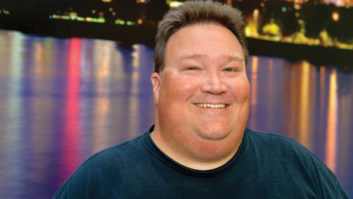The Wrong Mentality
As a 38-year veteran of the broadcast engineering field, I can safely state that my colleagues and I have seen numerous “new” technical ideas come and go over the years. Some of these have provided true enhancements to the AM/FM broadcasting art; others were passing fads, soon to be gone and forgotten.
I have been following IBOC development, most notably in the FM arena, and I have in fact been involved with adding HD to three stations to date. While I admittedly remain on the fence as to the viability of hybrid transmission, I’m trying to be open-minded and unbiased as our industry passes over the various road bumps in settling into a workable system.
My ire was raised, however, by certain comments made in the Oct. 21 Radio World pursuant to the IBOC power increase debate.
The present-day audio quality enjoyed in analog FM broadcasting was established with the underpinnings of much scientific work, along with strict FCC requirements regarding audio distortion and noise. Perhaps this is the time to educate or remind our younger broadcast engineering community that up until not so long ago, broadcasters were required to conduct at least annual quality measurements under penalty of FCC rules. If set specifications were not met, it had to be fixed and that was that.
I can bear witness to the fact that some stations cheated and their air sound proved it. Perhaps it was pure coincidence, but my facilities always proofed out and were also number one in the ratings.
While I am making every personal effort to accept change and to get along in our plug-and-play world, I remain astounded by professional commentary now suggesting that FM quality be appraised on the merits of how well system noise is drowned out by a an automobile’s HVAC system or tire noise. Perhaps then, people listening at home could place a fan next their receiver as well.
If such mentality prevails, we’re all in trouble, IBOC or not!
Steve Konopka
Chief Engineer
WPNE(TV/FM)
Green Bay, Wis.
The Latest Gimmick
It looks like broadcasters are the only people unaware, or unwilling to see, that HD Radio is a bomb.
This iBiquity bandwith-robbing, adjacency-destroying, spectrum-wasting attempt — to be something radio should not be — needs to shut down and join the AM stereo, FM quadraphonic, RDS and tagging junkyard.
Maybe if broadcasters got back to the business of programming the main channel to serve their communities and stop trying to emulate a satellite service, their bottom lines might come off the floor and make radio again what it is supposed to be: an asset to the community of license.
Here’s a letter I received from a buddy who is chief engineer at a large group-owned station:
“Larry, a friend of mine (local engineer) at W—(FM) said they turned off their HD channels. They figured they had 12 known listeners and the electricity was $1,000 per month!”
Given the state of the economy and their reduced revenues, it was a logical business decision. It’s always amused me to watch broadcasters flock to the latest gimmick and forget what they’re really licensed to do.
A recent nationally syndicated article referred to HD Radio as “Hum Drum” radio. They were being kind.
Larry Tighe
Owner
WRNJ(AM)
Hackettstown, N.J.
Engineers and Licenses
In response to Mr. Aegerter’s letter in the Oct. 21, 2009 Radio World (“Who Is an Engineer?”) and to a recent article by Chris Imlay, Esq. in the August 2009 SBE Signal newsletter, there still seems to be quite a bit of misinformation surrounding Professional Engineering (PE) licensure.
In arguing the relevance of PE licensure, both Mr. Aegerter and Mr. Imlay claim there is little or no electrical or communications engineering in the PE exams. Mr. Aergerter’s recollection of the Engineer in Training (EIT) exam goes back to 1971; there appear to be many changes in the exams since this time.
The EIT exam that I took in 1982 had a mix of engineering topics, but also had sections covering electrical engineering. Yes, there were non-electrical questions relating to statics, strength of materials, dynamics, etc., but to be honest, I have used what I learned about those subjects, especially when working with towers and structures, and there is a lot of subject matter overlap in the real world.
The eight-hour NCEES PE exam I took was entirely related to electrical engineering, with the examinee choosing one of three electrical engineering specialty sections in the second half of the exam. The section I selected dealt with electronics, systems and communications.
I took the EIT exam the year I received my BSEE degree and waited over 20 years before taking the PE exam. The reason I took the PE exam after so many years was my attorney telling me “you need a license to practice engineering in this state.” It seems that there was a time when buildings burned down, bridges collapsed, mines caved in, etc., due to poor engineering practices. It was then that the states stepped in to regulate the profession and protect public life and safety. They offered a license to individuals who were willing to study engineering, pass a series of exams, and then practice the profession in an ethical manner.
Another area of misunderstanding is what is known as the “industrial exemption.” This is wording in the state engineering codes which exempt individuals from licensure in most cases when they perform engineering for an employer. PE licensure is generally required when individuals offer services directly to the public. So if you work for someone, you most likely don’t need a PE to do that work. If you do consulting work for hire, it depends on the type of work you do and the laws of your state.
So what about the FCC? States regulate the professions and the federal government pretty much doesn’t interfere. The FCC may issue a station construction permit, but it’s the local building authorities who approve the final building or tower design, issue building permits and perform inspections.
In my state, any “final plan, specification and report … shall bear the seal of the professional engineer or professional structural engineer when submitted to a client, when filed with public authorities, or when submitted to a building official for the purpose of obtaining a building permit.” I suppose that the FCC could overrule state regulation of engineering, but that doesn’t seem to be in the public interest and I know of no case where they have.
Like it or not, most states require licensure for engineers offering services to the public. I can empathize somewhat with the critics; my life would be simpler if I didn’t have to spend time and money maintaining a PE license.
For more information, many states have their engineer codes posted online. Please note that I am not an attorney and this is not legal advice. The laws vary and you should consult an attorney to better explain the laws of your state.
Mario Hieb, P.E.
Consulting Engineer
Salt Lake City
Powering Down
The commentary by Pamal Broadcasting’s Paul Thurst about silencing AM radio from midnight to 6 a.m. (“Sign Off, and Save Some Money,” Aug. 12) goes against serving the community interest in which a station serves.
Man-made emergencies or natural occurrences know no hours. News and weather that affect the local community would have far more impact if radio were silenced during these critical night-time hours.
If Mr. Thurst deems it necessary to silence his station or group’s radio after midnight, I urge the communities in which Pamal Broadcasting serves to remember this at renewal time and to contact the FCC, because his broadcast entity is not serving in the public interest of the community it serves.
Charles Gordon
Myrtle Beach, S.C.










